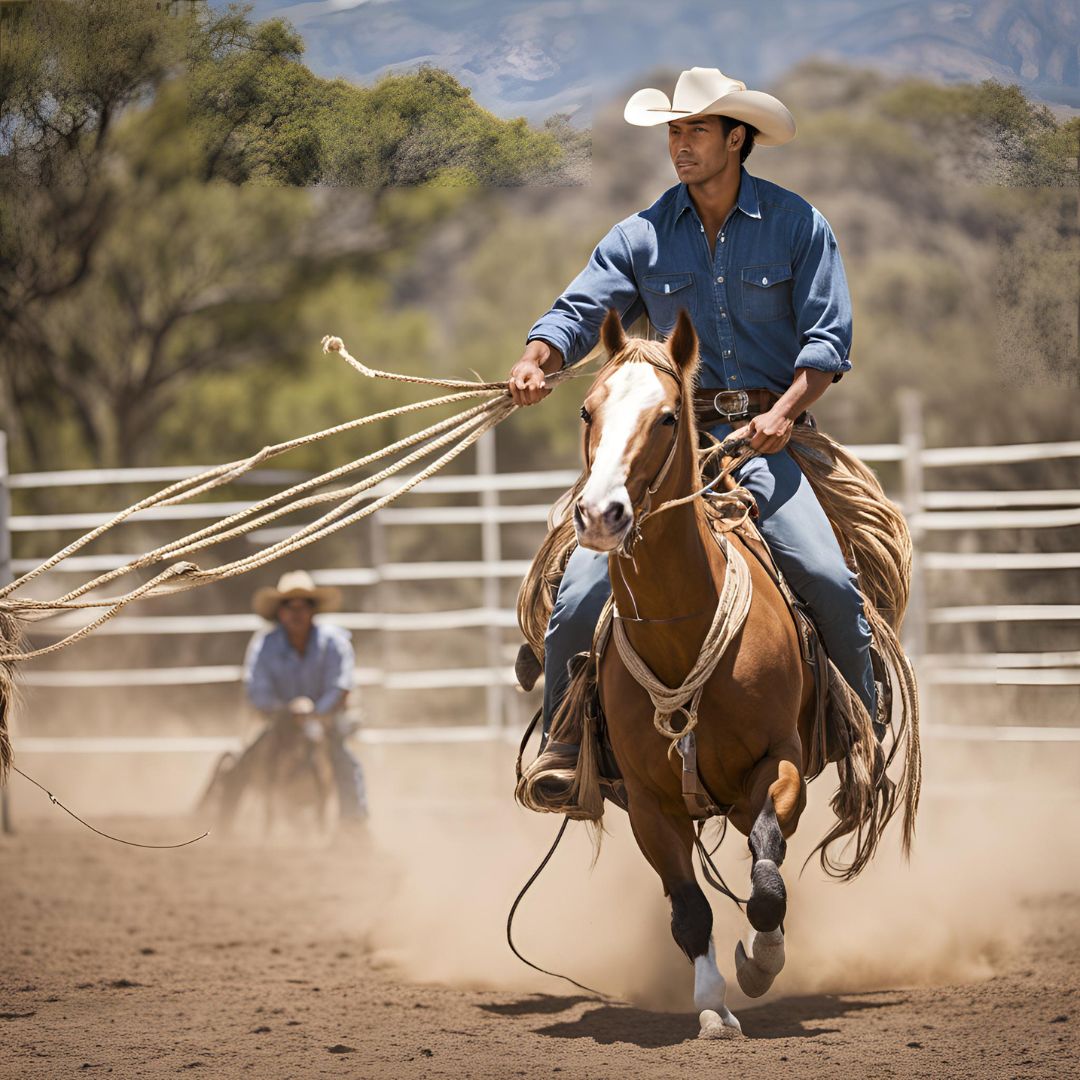The Art and Science of Western Roping: A Comprehensive Guide
Western roping, an integral part of cowboy culture, is both an art and a science. It’s a skill that combines precision, timing, and practice with an understanding of the tools and techniques used to rope livestock effectively. Whether you’re a beginner looking to learn the basics or an experienced roper aiming to refine your skills, this guide will provide you with the essential knowledge to master the art and science of western roping.
Understanding Western Roping: A Historical Overview
Western roping, also known as “lassoing,” has its roots in the ranching traditions of the American West. Originally developed as a practical method for cowboys to catch cattle, horses, and other livestock, roping has evolved into a competitive sport and an essential skill in modern ranching.
The classic image of a cowboy swinging a lasso and capturing a runaway steer is more than just a symbol of the Old West; it represents the culmination of years of practice, precision, and the application of key roping principles.
The Science of Roping: Tools and Techniques
Understanding the science behind western roping begins with the right tools and techniques.
- The Rope (Lariat or Lasso):
- Material: Traditional ropes are made of hemp or nylon, with modern options including synthetic materials that offer durability and consistency.
- Length and Diameter: A standard lariat typically ranges from 30 to 60 feet in length and 3/8 to 7/16 inches in diameter. The choice depends on the type of roping and personal preference.
- Loop Formation: The loop size should be adjusted based on the target. For instance, a larger loop is necessary for roping larger animals, while a smaller loop works better for smaller livestock.
- The Swing:
- Grip: Hold the hondo (the loop) in your dominant hand while the tail of the rope rests in your other hand. The swing begins with the rope overhead, rotating in a smooth circular motion.
- Timing and Rhythm: Mastering the rhythm of your swing is crucial. The key is to maintain a consistent motion while keeping the loop open and ready for release.
- The Release:
- Precision: The release is a combination of timing and accuracy. As you approach the target, release the rope in a smooth, controlled motion, aiming to land the loop over the head, horns, or feet of the animal.
- Follow-Through: After releasing the rope, a slight pull on the tail of the lariat tightens the loop, securing your catch.
The Art of Roping: Developing Skill and Precision
The art of roping lies in the practice and finesse required to execute the science effectively. Here are some tips to develop your roping skills:
- Start with the Basics:
- Practice on Dummies: Before attempting to rope live animals, practice on roping dummies. This helps build muscle memory and improves your accuracy.
- Work on Your Swing: Consistent practice helps refine your swing. Begin with a slow, deliberate motion and gradually increase speed as you gain confidence.
- Focus on Footwork:
- Balance and Stance: Proper footwork is essential. A stable, balanced stance allows for better control of your swing and more accurate releases.
- Movement: As you improve, practice moving while swinging your lasso. This simulates real-world scenarios where the target may be in motion.
- Advanced Techniques:
- Heeling: This involves roping the hind legs of the animal, a technique requiring precise timing and accuracy.
- Heading: This refers to roping the head or horns of the animal. It’s often the first skill taught to beginners, but mastering it is key to becoming a proficient roper.
The Importance of Safety in Roping
Safety is paramount in western roping, especially when working with live animals.
- Protective Gear:
- Gloves: Wear gloves to protect your hands from rope burns and blisters.
- Boots and Clothing: Sturdy boots and appropriate clothing help prevent injuries while roping.
- Animal Welfare:
- Proper Technique: Ensure that your roping technique is humane and doesn’t harm the animal. Practice smooth, controlled releases and avoid excessive force.
- Ethical Considerations: Always prioritize the well-being of the livestock. Roping should be conducted in a manner that minimizes stress and discomfort to the animals.
Competitive Roping: Taking Your Skills to the Next Level
For those looking to compete in roping events, additional skills and strategies are required.
- Understanding the Events:
- Team Roping: Involves two riders – one responsible for heading (roping the head) and the other for heeling (roping the hind legs).
- Tie-Down Roping: In this event, the roper must catch the animal, dismount, and tie three of its legs together.
- Breakaway Roping: A variation of tie-down roping, where the rope breaks away from the saddle horn once the calf is roped.
- Training and Conditioning:
- Horse Training: Ensure your horse is well-trained and responsive to commands. A well-coordinated horse and rider team is crucial for success.
- Physical Conditioning: Maintain your fitness level to handle the physical demands of competitive roping. Strength, endurance, and agility are essential.
- Mental Preparation:
- Focus and Concentration: Competitive roping requires a high level of mental discipline. Develop techniques to stay focused under pressure.
- Strategy: Each roping event has its own set of rules and strategies. Understanding these can give you a competitive edge.
Conclusion: The Art and Science of Roping in Modern Western Culture
Western roping is more than just a skill; it is a blend of art, science, tradition, and modern practice. Whether you’re roping on a ranch, competing in rodeo events, or simply enjoying the sport, mastering the techniques and understanding the nuances of roping are essential to success.
By combining the precision of science with the creativity of art, you can develop the skills needed to excel in western roping. Remember, the journey to becoming a proficient roper is ongoing, requiring dedication, practice, and a deep respect for the tradition and culture of the American West.





